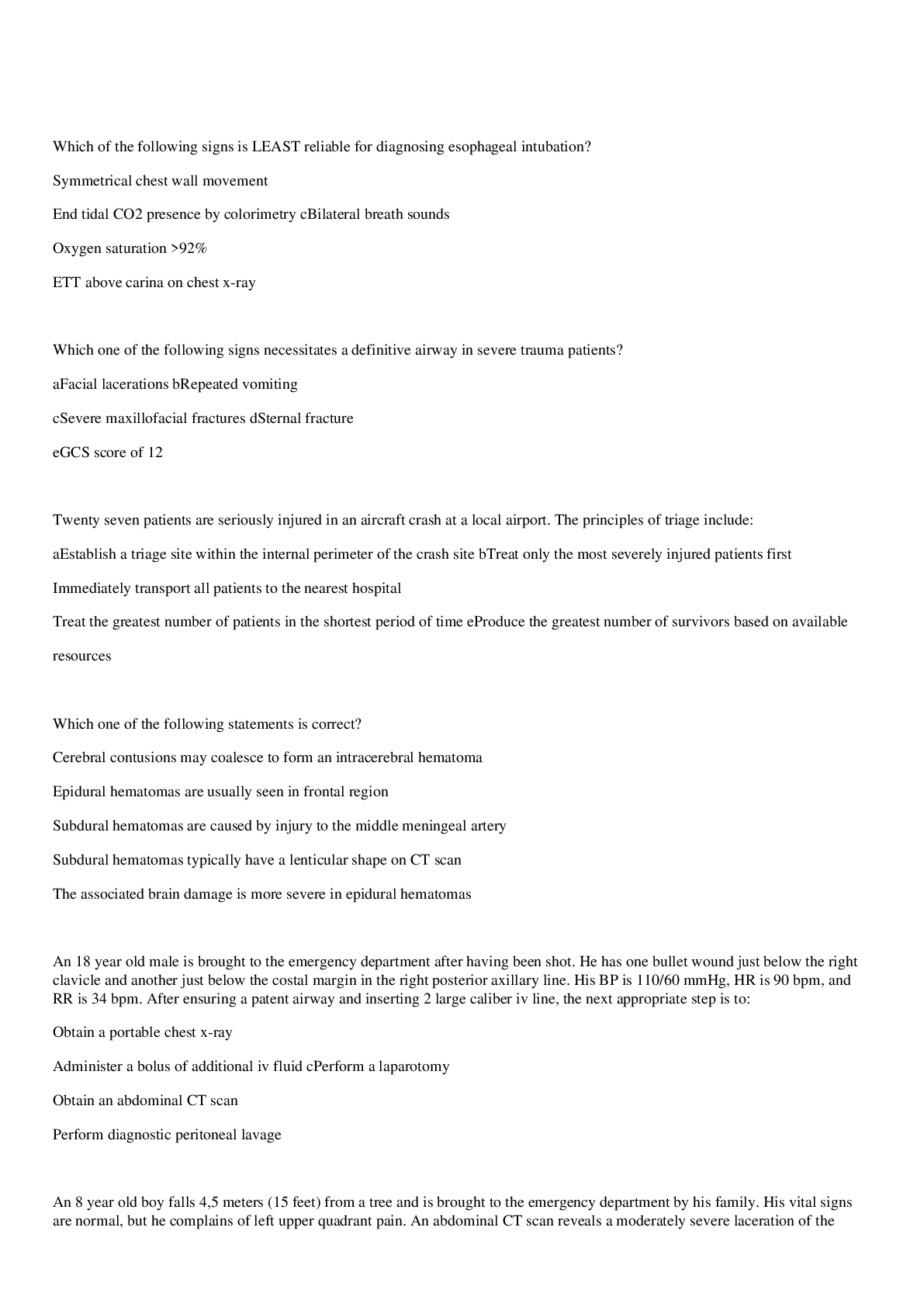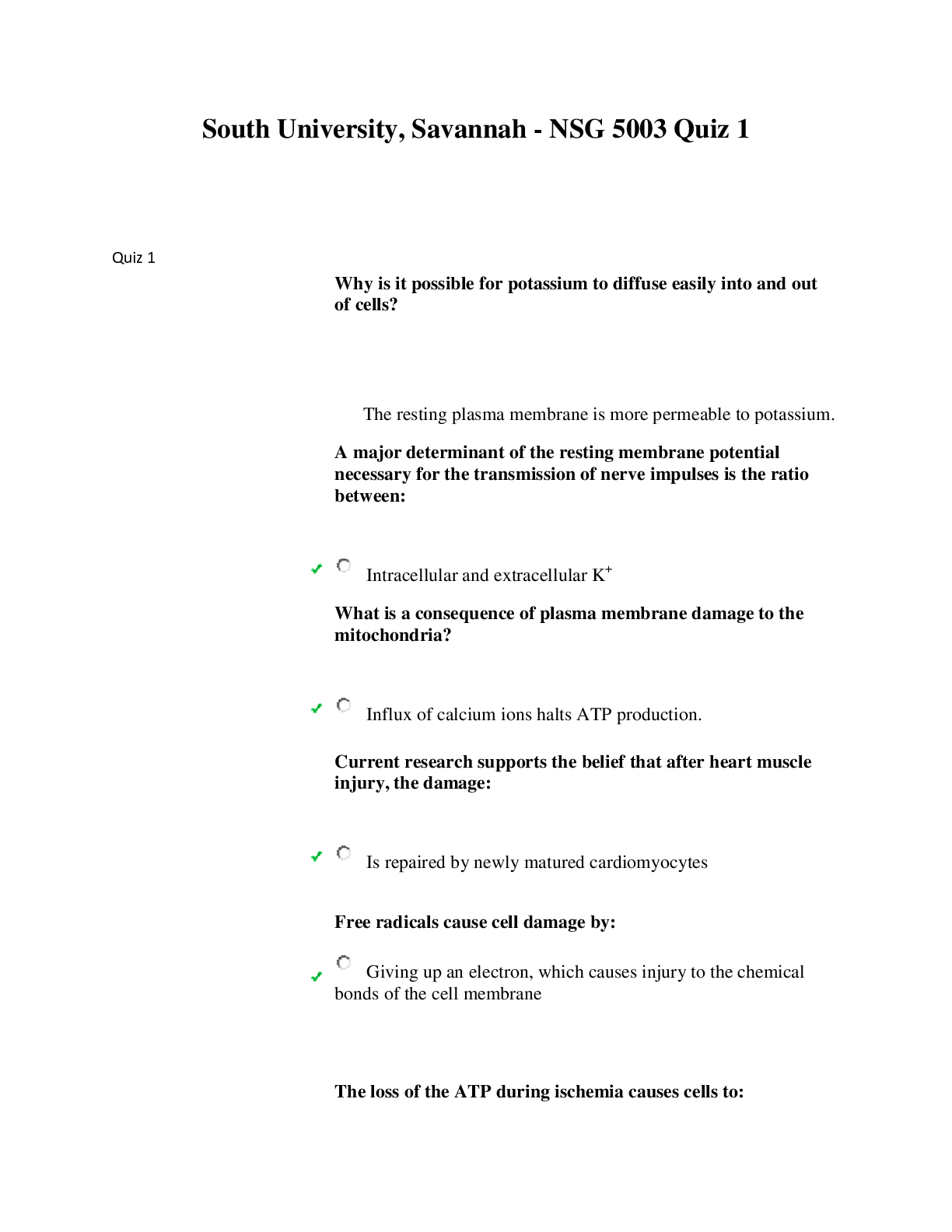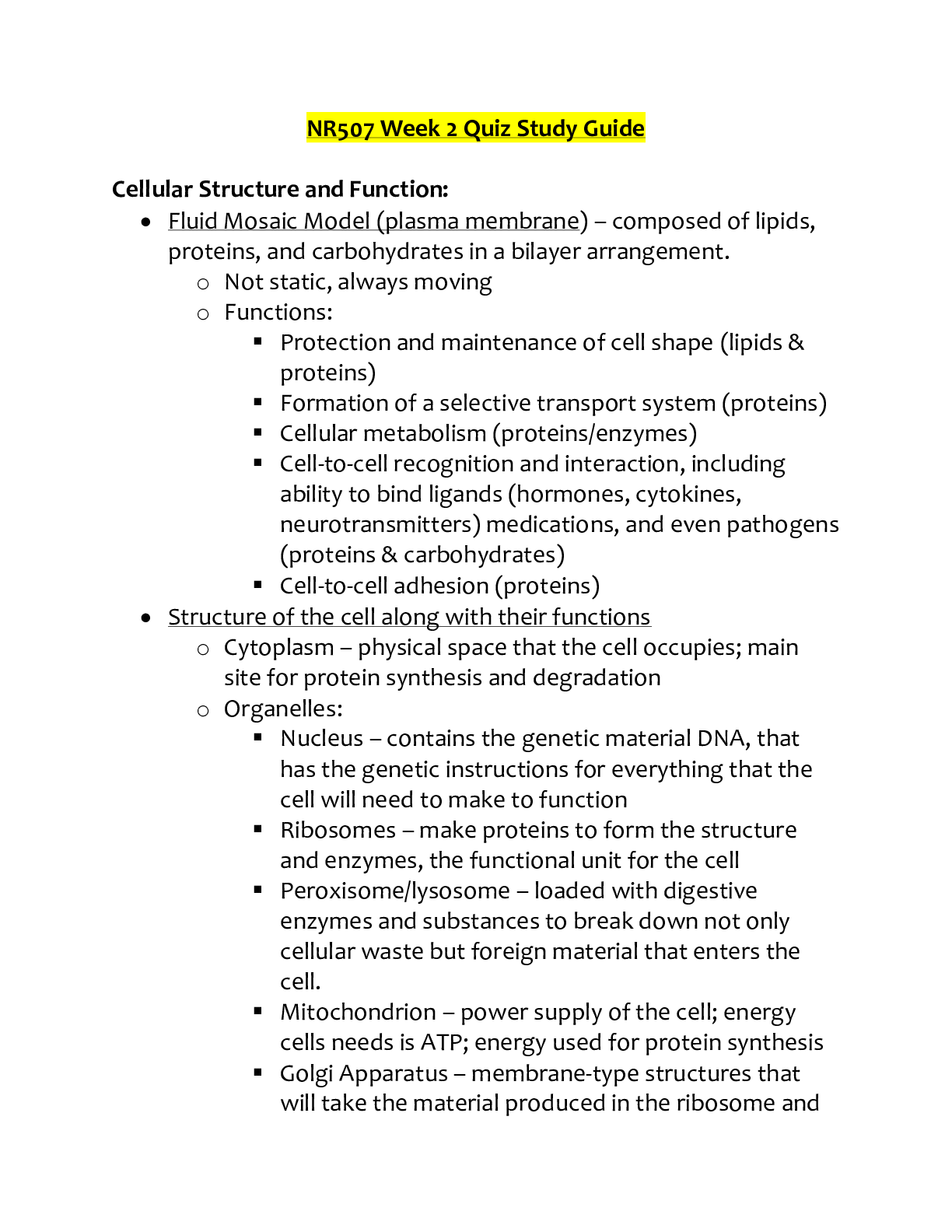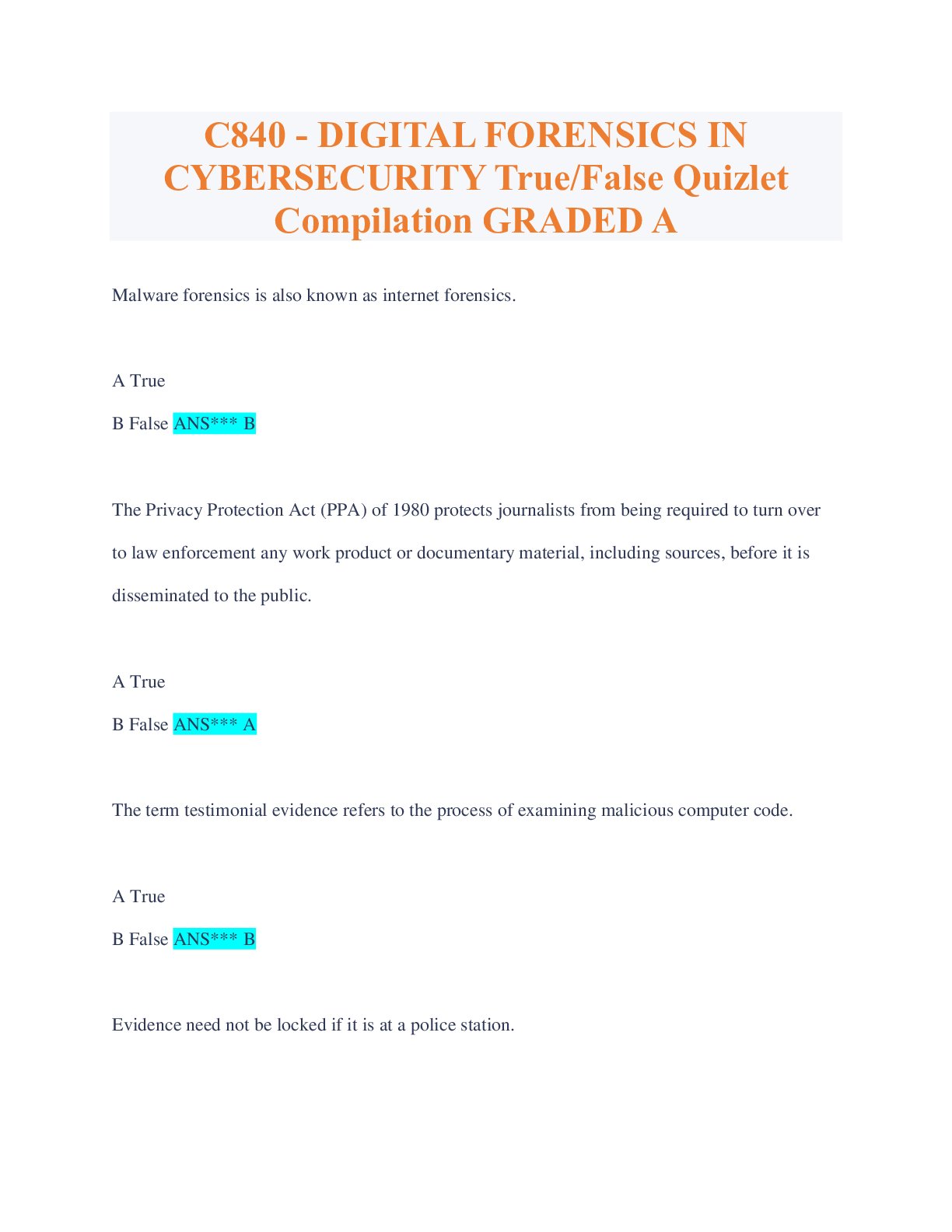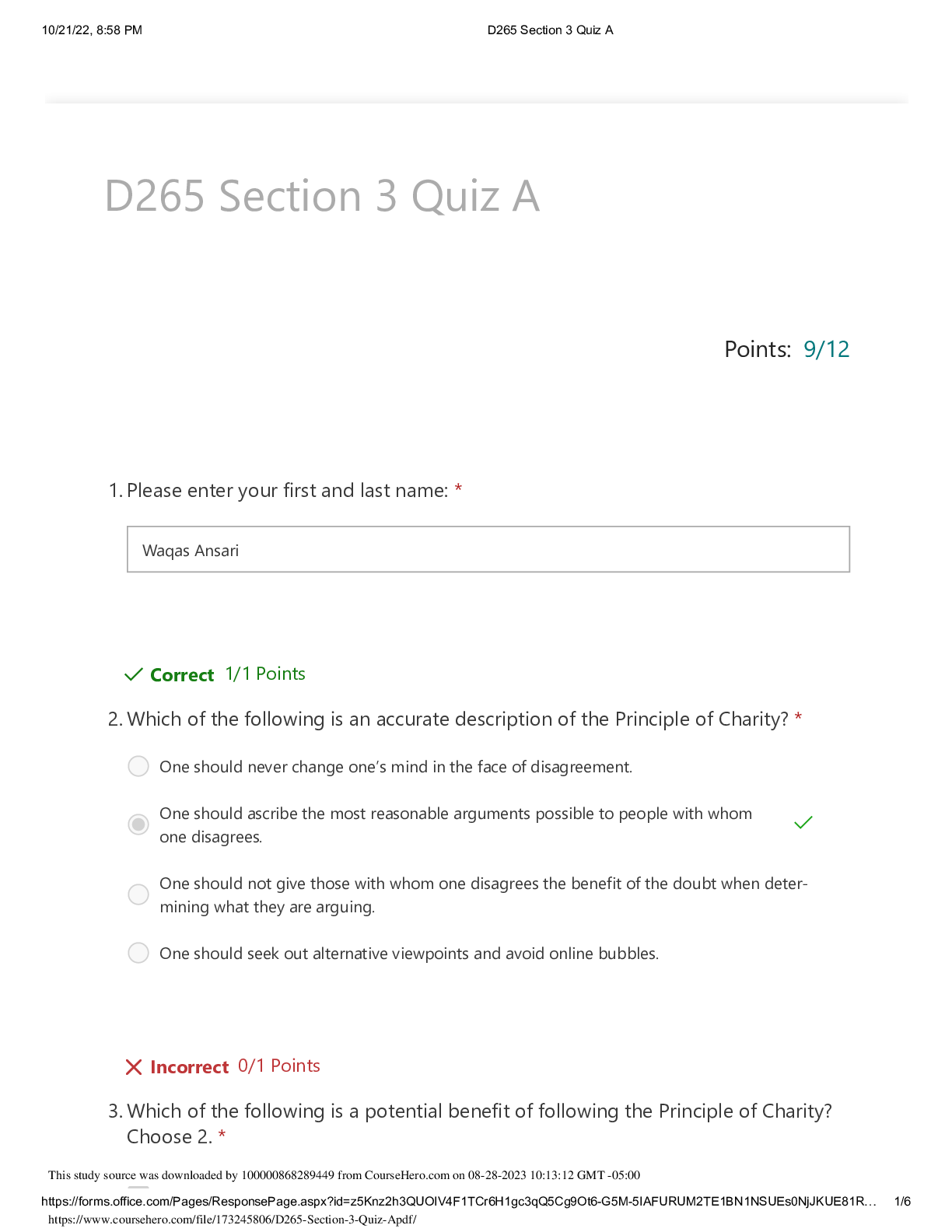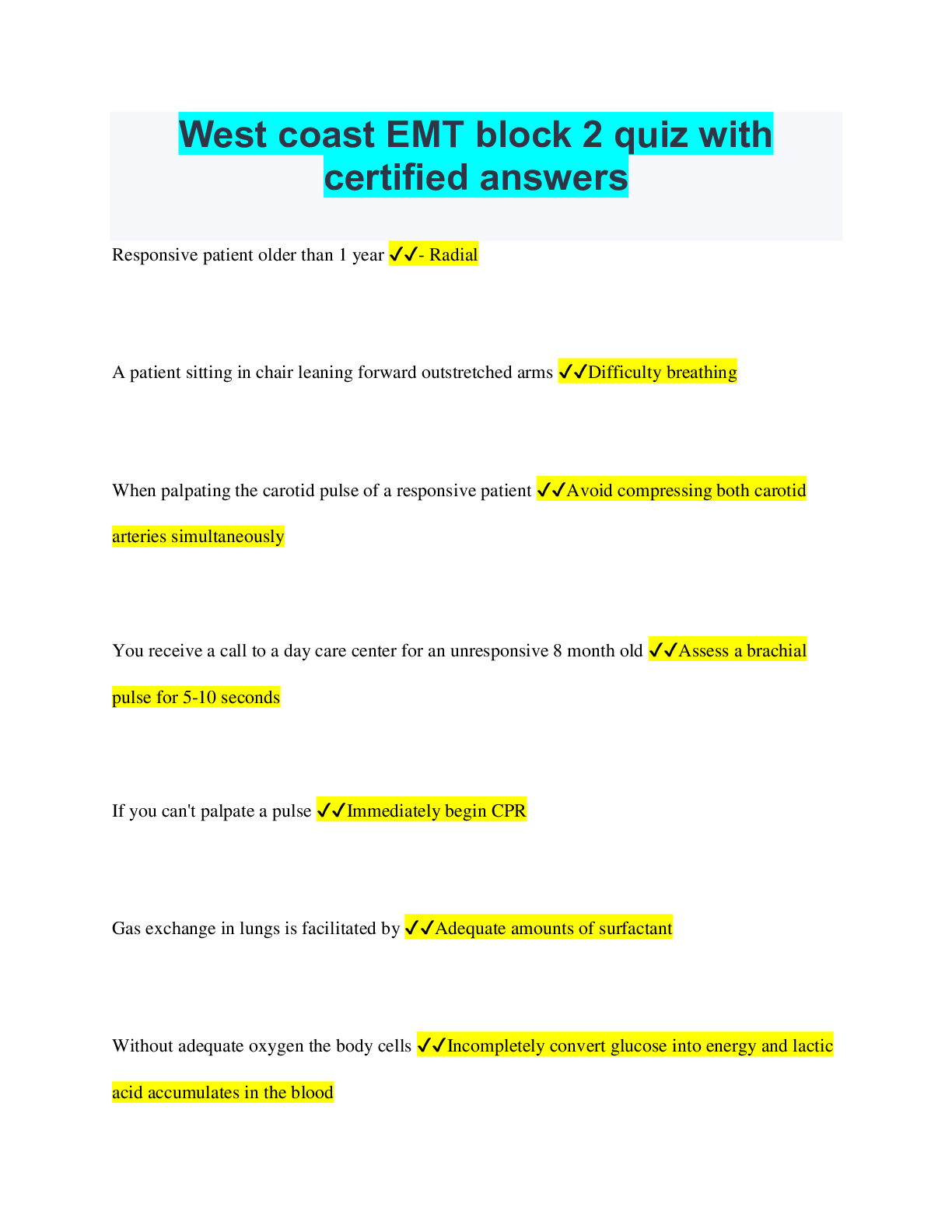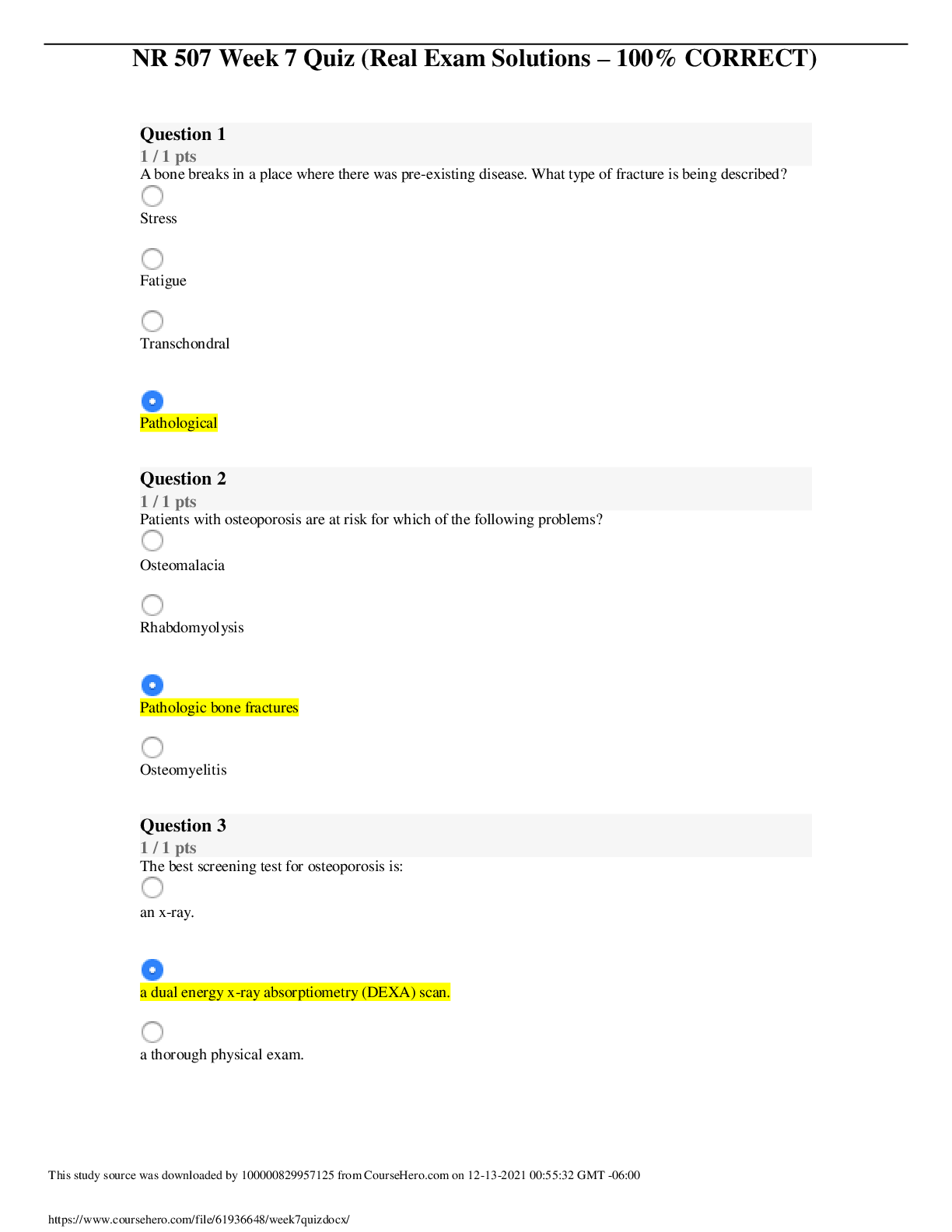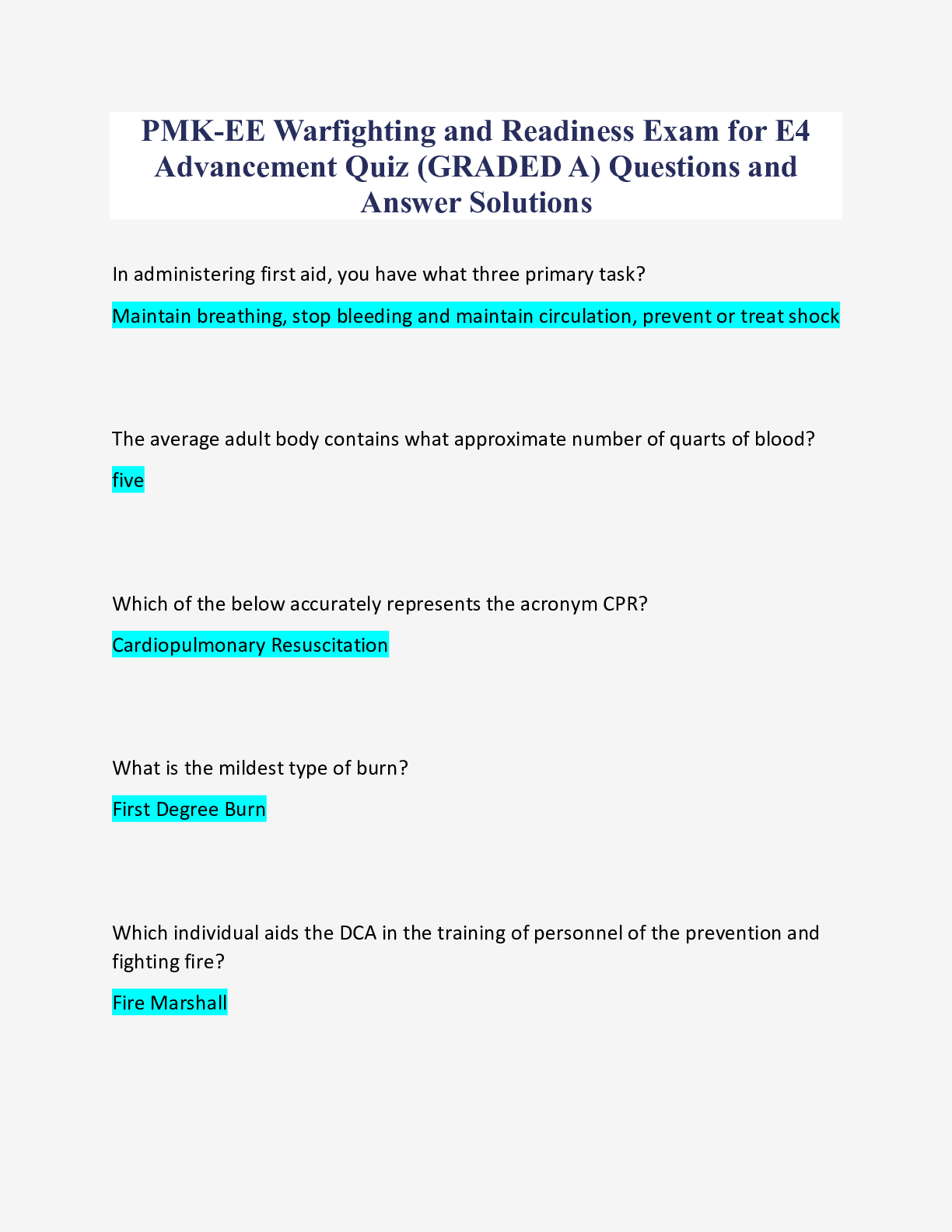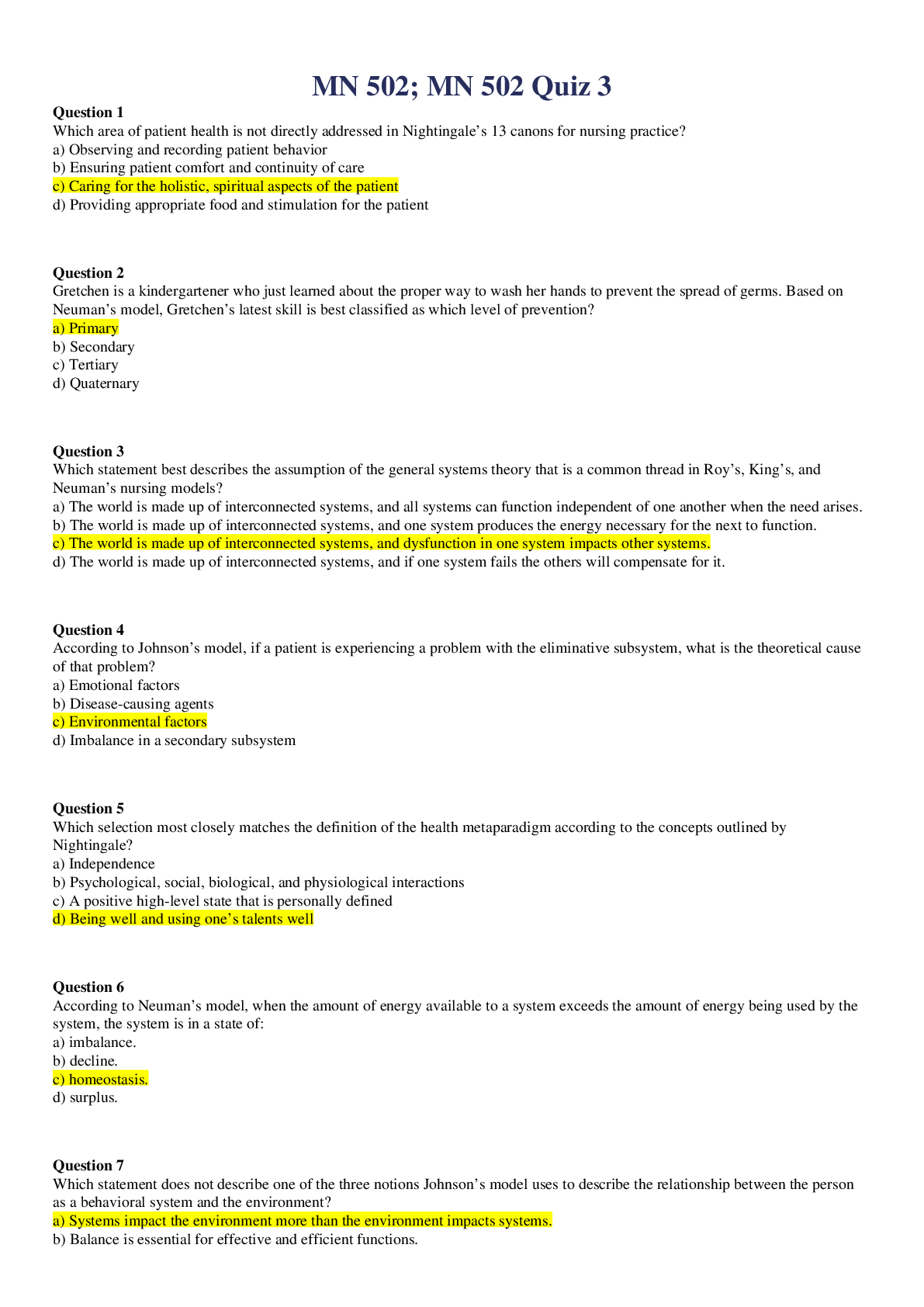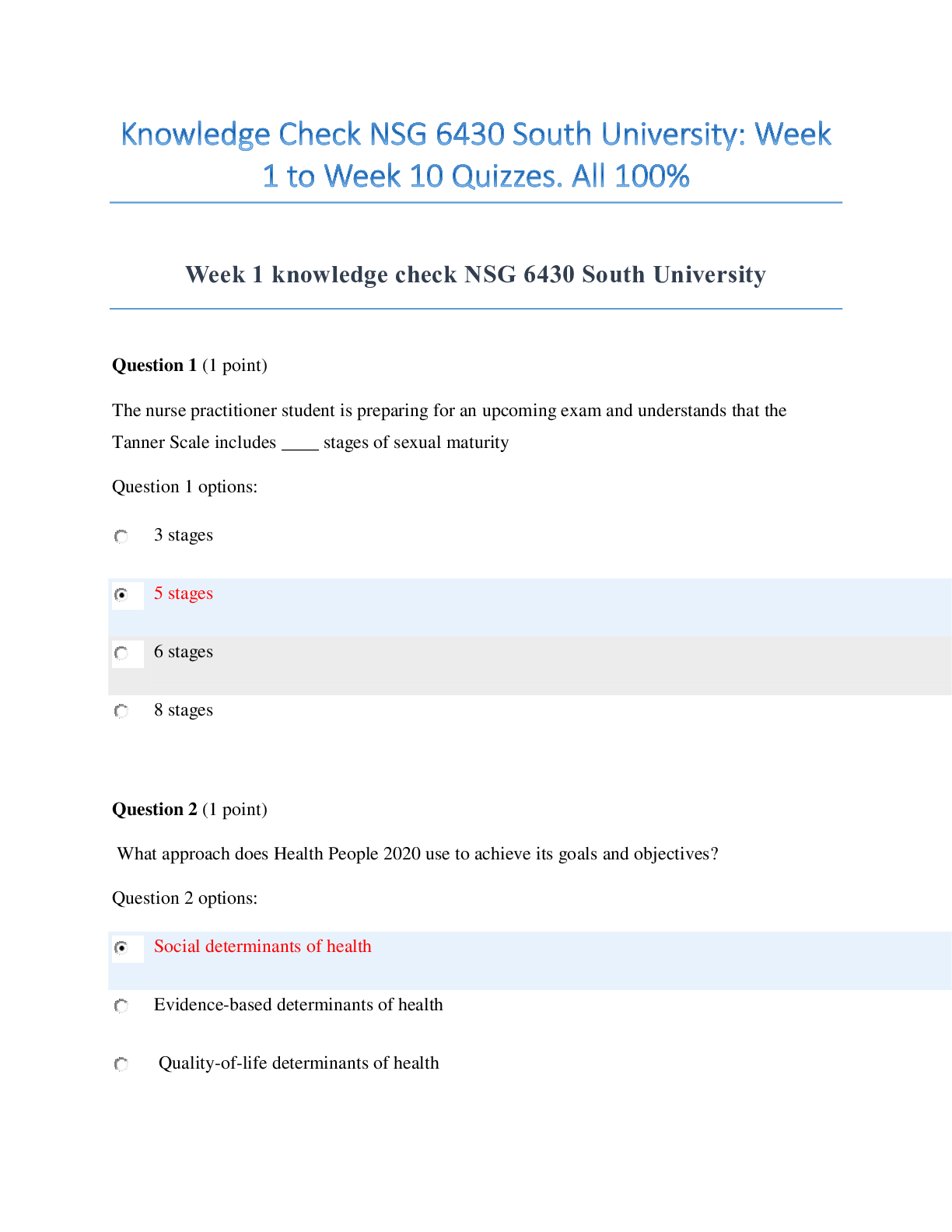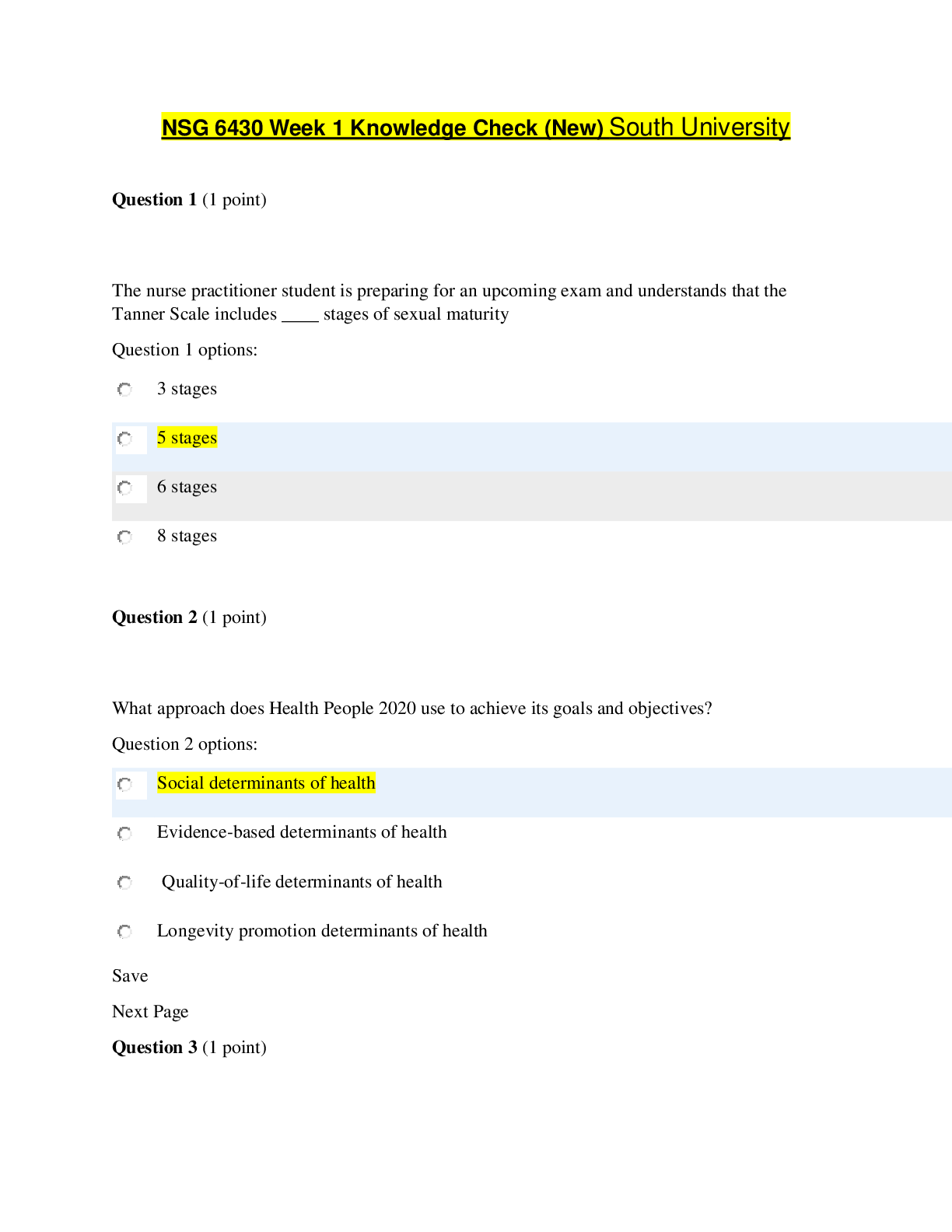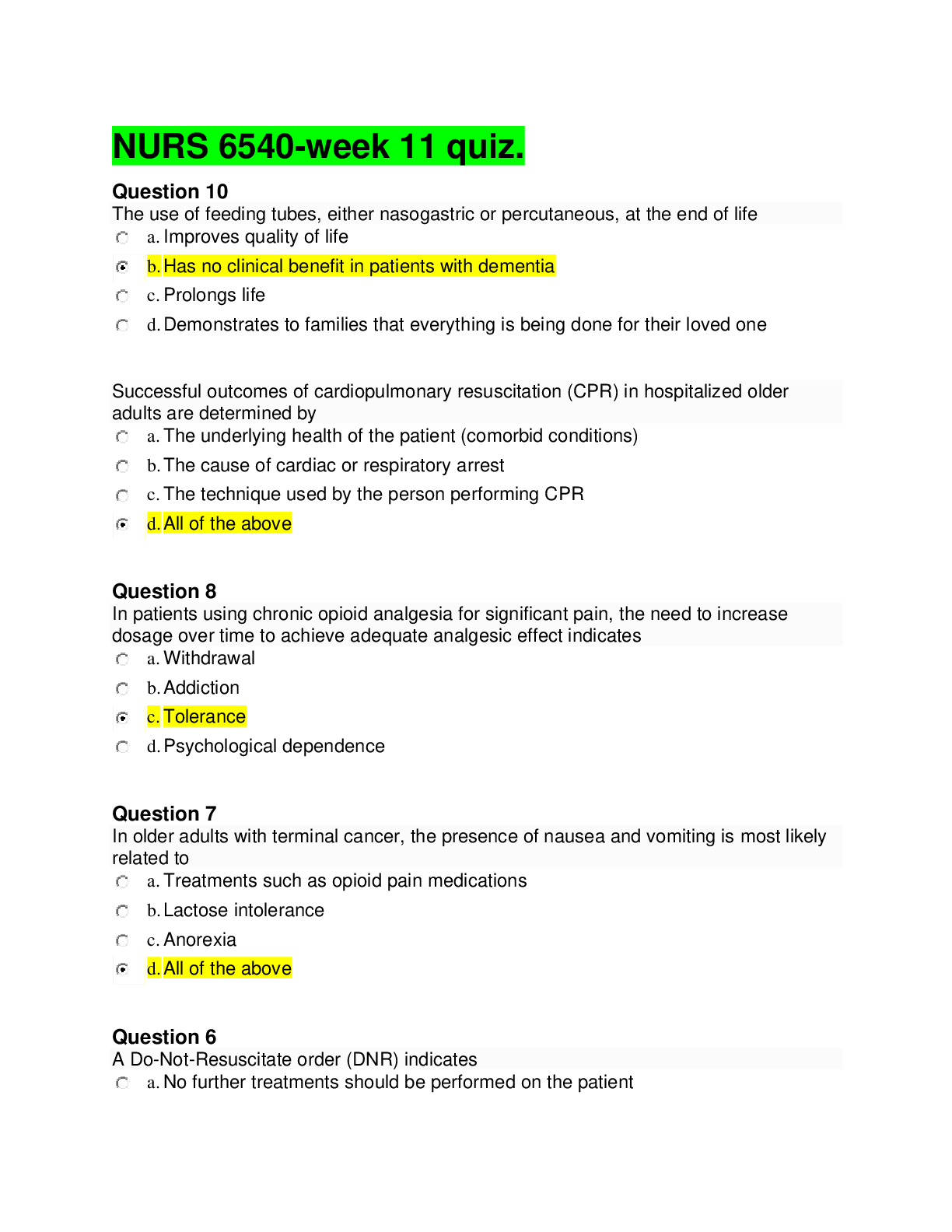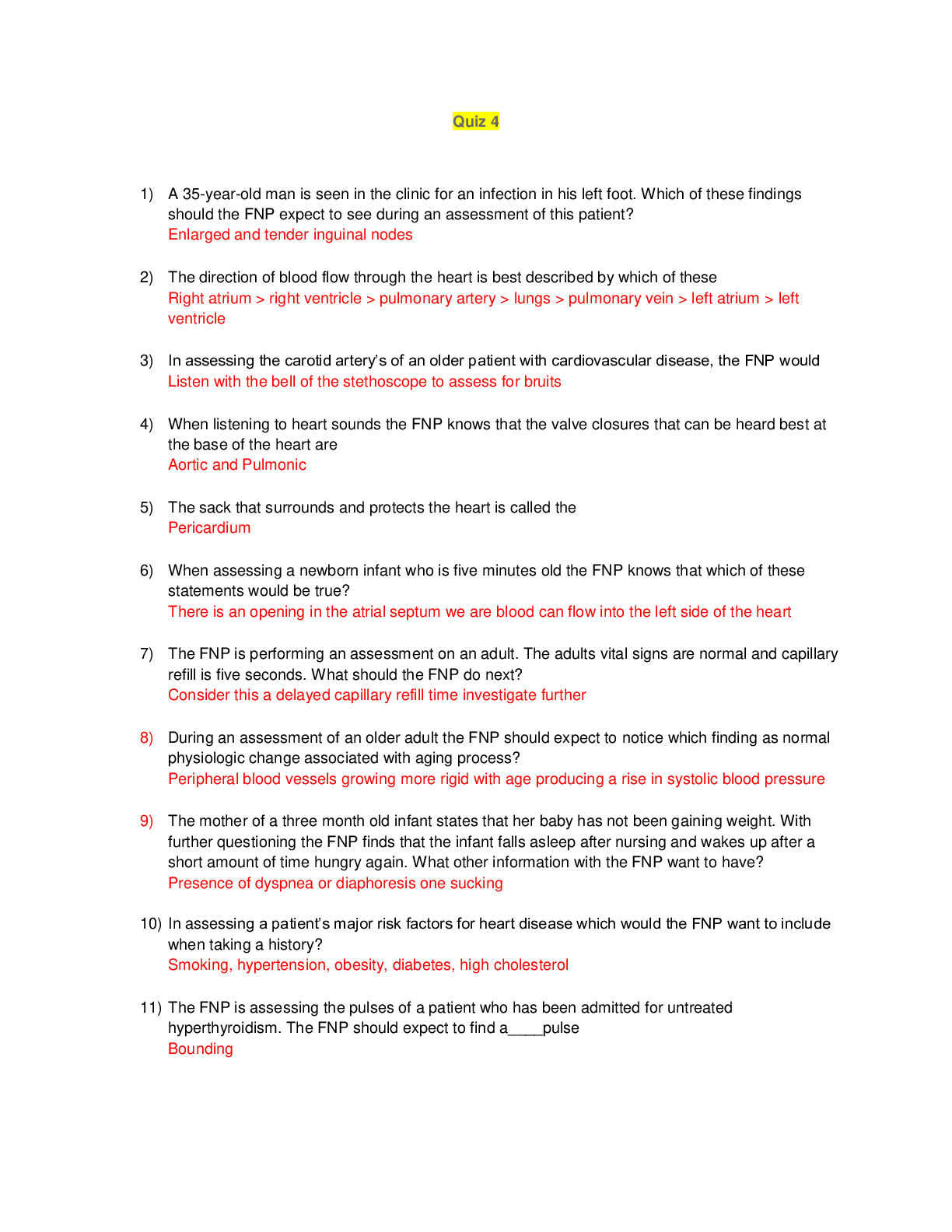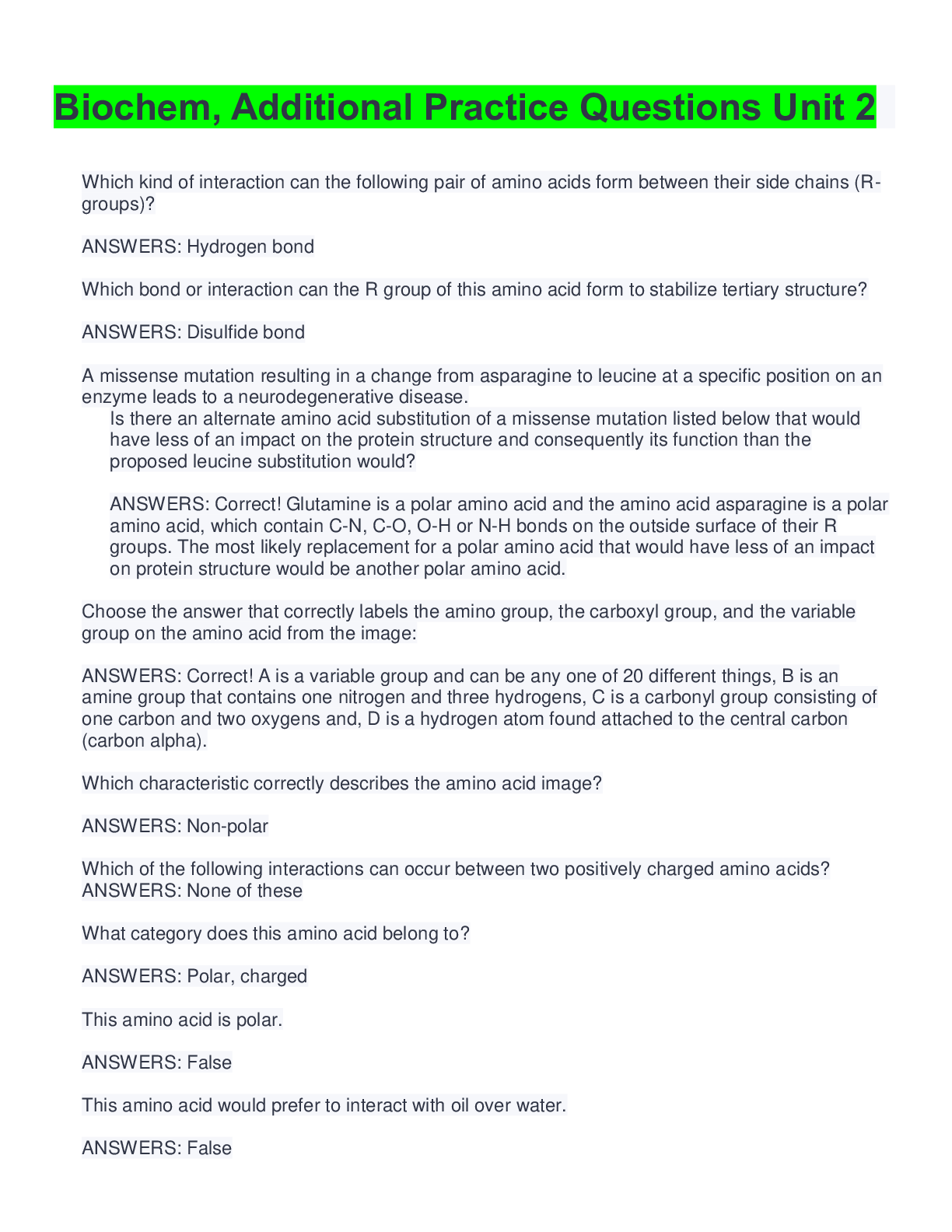TNCC REVIEW QUESTIONS, 2022 PREDICTOR PAPER. GRADED A+
Document Content and Description Below
You are caring for a patient who was involved in a motor vehicle crash and is 32 weeks pregnant. Finding of your secondary survey include abdominal pain on palpitation, fundal height at the costal m... argin, and some dark bloody show. Varying acceleration and decelerations are noted on cardiotocography. These finding are most consistent with which of the following? a. Placental abruption b. Preterm labor c. Uterine rupture d. Fetal demise 2. Which of the following is a possible complication of positive-pressure ventilation? a. Worsening pneumothorax b. Worsening flail chest c. Reabsorption of pleural air d. Negative intrapleural pressure 3. Which of the following is a component of the trauma triad of death? a. Acidosis b. Hyperthermia c. Hemorrhage d. Sepsis 4. Following a review of recent drills and a real disaster event, a hospital has identified deficiencies and is taking steps to minimize the impact of a future disaster. Which phase of the disaster life cycle does this describe? a. Mitigation b. Preparedness c. Response d. Recovery5. A 35-year-old male present with facial trauma after being struck in the face with a baseball. A teardropshaped left pupil is noted on exam. What type of injury is suspected? a. Oculomotor nerve palsy b. Globe rupture c. Uncal herniation d. Retinal detachment 6. The trauma nurse knows that placing a bariatric patient in a ramped position provides better visualization during the insertion of which device. a. Intraosseous line b. Orogastric tube c. Endotracheal tube d. Urinary catheter 7. ? 8. ? 9. ? 10. A 5-year-old child presents to the ED with bruises to the upper arms and buttocks in various stages of healing and multiple small, clean, round burns to the back. There are no abnormalities found based on the pediatric assessment triangle or primary survey. Which of the following is the priority nursing intervention? a. Report your suspicion of maltreatment in accordance with local regulations. b. Apply ice to the bruises and consult wound care. c. Engage in therapeutic communication to determine the mechanism of injury. d. Provide the family with injury prevention resources.11. EMS arrives with the intoxicated driver of a car involved in a motor vehicle crash. EMS reports significant damage to the driver’s side of the car. The patient is asking to have the cervical collar removed. When is it appropriate to remove the cervical collar? a. After a physical examination if the patient has no radiologic abnormalities on CT b. After physician evaluation if the patient has no neurologic abnormalities on exam c. After palpation of the spine if the patient has no point tenderness to the vertebral column d. After a physical examination if the patient has no neck pain and movement 12. Why is a measure of serum lactate obtained in the initial assessment of a trauma patient? a. To measure oxygenation and ventilation b. To quantify the base deficit for the adequacy of cellular perfusions c. To gauge end-organ perfusion and tissue hypoxia d. To determine the underlying cause of shock 13. Which of the following is NOT considered goal-directed therapy for cardiogenic shock? a. Controlled fluid boluses b. Antidysrhythmic administration c. Pericardiocentesis d. Cardiac catheterization 14. A patient is brought to the emergency department of a rural hospital following a high-speed vehicle collision. When significant abdominal and pelvic injuries are noted in the primary survey, which of the following is the priority intervention? a. Initiate transfer to a trauma center b. Provide a report to the operating room nurse. c. Obtain imaging studies. d. Place a gastric tube.15. A patient with a complete spinal cord injury in neurogenic shock will demonstrate hypotension and which other clinical signs? a. Bradycardia and ipsilateral absence of motor function b. Tachycardia and respiratory depression c. Tachycardia and absent motor function below the level of injury d. Bradycardia and absent motor function below the level of the injury 16. You are treating a 27-year-old male in respiratory distress who was involved in a house fire. Calculation total body surface area (TBSA) burned is deferred due to the need for emergent intubation. At what rate do y begin fluid resuscitation? a. 1000ml/hour b. 500 ml/hour c. 250 ml/hour d. 125 ml/hour 17. An intubated and sedated patient in the emergency department has multiple extremity injuries with eh potential for causing compartment syndrome. What is the most reliable indication of compartment syndrome in a patient who is unconscious? a. Pulselessness b. Pressure c. Paranesthesia d. Pallor 18. Which of the following patients warrants referral to a burn center? a. A 21-year-old female with a partial-thickness burn to her right forearm. b. A 40-year-olk hypertensive male with a superficial burn to the back c. A 52-year-old diabetic male with a partial thickness burn to the left lower leg. d. A 35-year-old hyperlipidemic female with a superficial burn to the anterior thorax19. Tearing of the bridging veins is most frequently associated with which brain injury? a. Epidural hematoma b. Subdural hematoma c. Diffuse axonal injury d. Intracerebral hematoma 20. Which of the follow assessment finding differentiates a tension pneumothorax from a simple pneumothorax? a. Increased work of breathing b. Unilaterally diminished breath sounds c. Pleuritic chest pain d. Hypotension that worsens with inspiration. 21. Which of the following pulse pressures indicate early hypovolemic shock? a. Widened b. Narrowed c. Greater than 50 d. Increased 22. The nurse is caring for a 120kg male brought in after a warehouse fire and is calculating the patient’s fluid resuscitation needs, He has painful red blistering to the entire surface of both upper extremities and superficial burns to the anterior chest. Using the modified Lund and Browder chart to calculate ethe total body surface area burned. How much IV fluid would be administered in the first 8 hours? a. 2280 ml b. 3840 ml c. 4560 ml d. 7680 ml23. During the primary survey of an unconscious patient with multi-system trauma, the nurse notes snoring respirations. What priority nursing intervention should be performed next? a. Open the airway with the head-tilt, chin lift maneuver. b. Auscultate bilateral breath sounds to assess ventilatory status. c. Assist respiration using a bag-mask device. d. Insert an oropharyngeal airway if there is no gag reflex. [Show More]
Last updated: 1 year ago
Preview 1 out of 13 pages
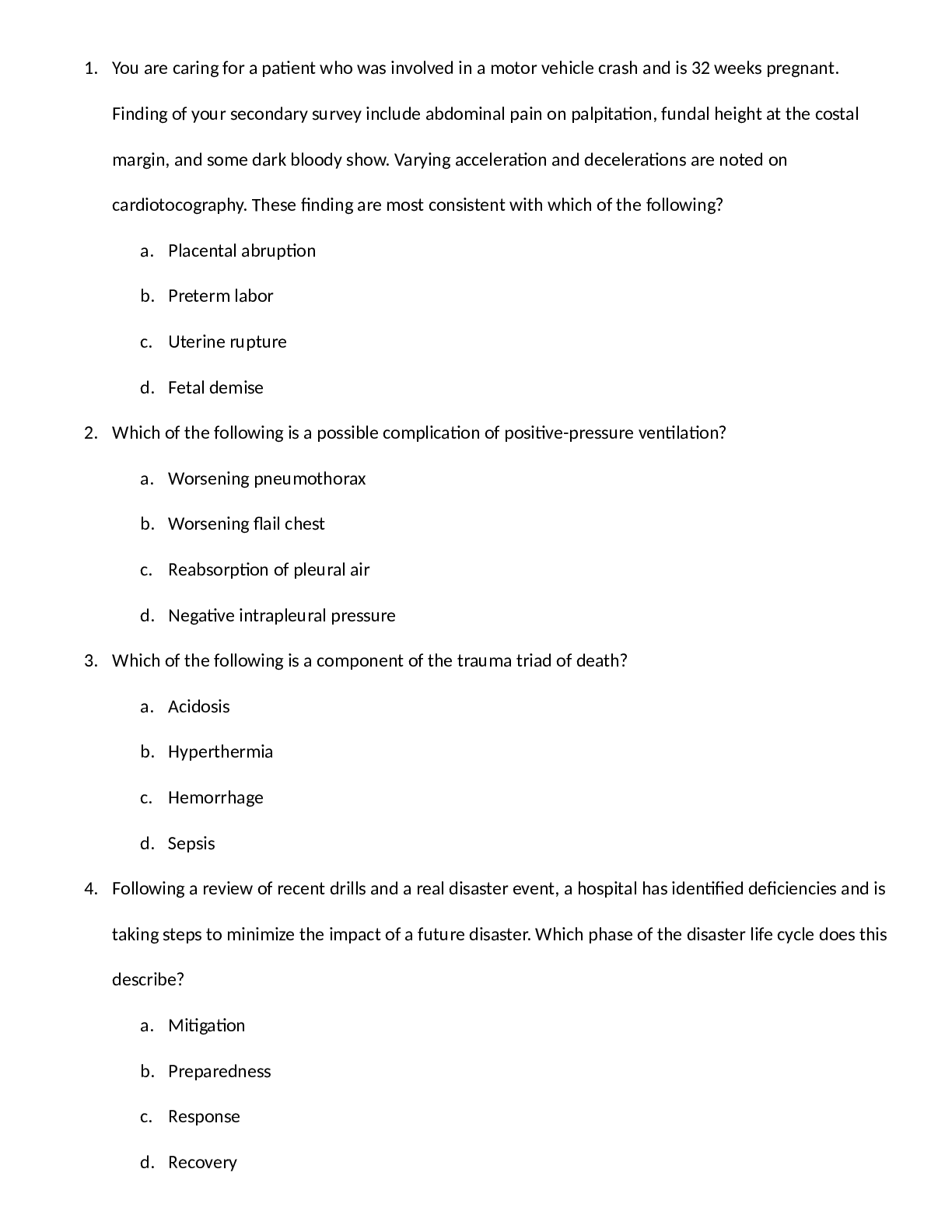
Reviews( 0 )
Document information
Connected school, study & course
About the document
Uploaded On
Aug 30, 2022
Number of pages
13
Written in
Additional information
This document has been written for:
Uploaded
Aug 30, 2022
Downloads
0
Views
218

